What Fast Car In The World truly reigns supreme? CARS.EDU.VN unveils the most exhilarating, record-breaking speed demons pushing the boundaries of automotive engineering and performance, offering a thrilling exploration for speed enthusiasts. Discover these extraordinary vehicles and understand what makes them the fastest machines on Earth. Learn about top-speed achievements, engineering marvels, and high-performance vehicle dynamics.
1. The Quest for Ultimate Velocity: Defining Speed in Cars
The pursuit of speed has always captivated the automotive world. Manufacturers continuously push technological boundaries to create cars that not only offer blistering acceleration but also maintain exceptional stability and control at extreme velocities. Several factors contribute to a car’s ability to achieve high speeds, including engine power, aerodynamics, weight, and tire technology. Understanding these elements is key to appreciating what fast car in the world can truly achieve.
1.1. Key Factors Influencing Top Speed
To understand what fast car in the world, examining the critical elements that enable a car to reach unparalleled speeds is essential. These include:
- Engine Power: The engine’s horsepower and torque output directly impact the car’s ability to accelerate and maintain high speeds.
- Aerodynamics: Streamlined body designs and active aerodynamic features minimize drag, allowing the car to cut through the air more efficiently.
- Weight: Reducing weight improves acceleration and handling, enabling the car to reach higher speeds with less effort.
- Tire Technology: High-performance tires provide the necessary grip and stability at extreme speeds, ensuring safety and control.
- Gear Ratios: Optimized gear ratios maximize the engine’s power output across the speed range, enhancing acceleration and top speed.
1.2. The Evolution of Speed Records
The quest for speed records dates back to the early days of automotive engineering. Throughout history, various manufacturers and engineers have strived to break existing records, showcasing their technological prowess and innovation. Here are some notable milestones:
| Year | Car | Top Speed | Significance |
|---|---|---|---|
| 1898 | Jeantaud Duc | 39.24 mph | One of the earliest documented speed records. |
| 1938 | Mercedes-Benz W125 Rekordwagen | 268.7 mph | A pre-war record that stood for decades. |
| 1997 | ThrustSSC | 763 mph (Mach 1.016) | First land vehicle to break the sound barrier. |
| 2019 | Bugatti Chiron Super Sport 300+ | 304.773 mph | The first production car to break the 300 mph barrier. |
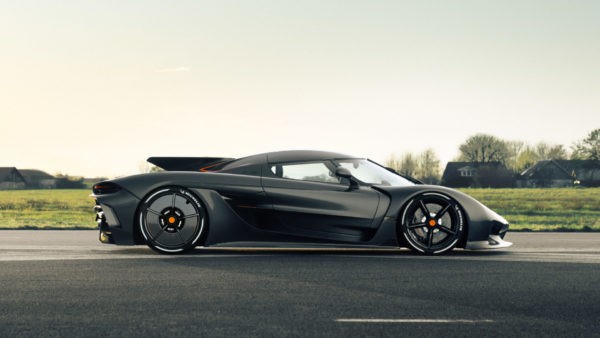
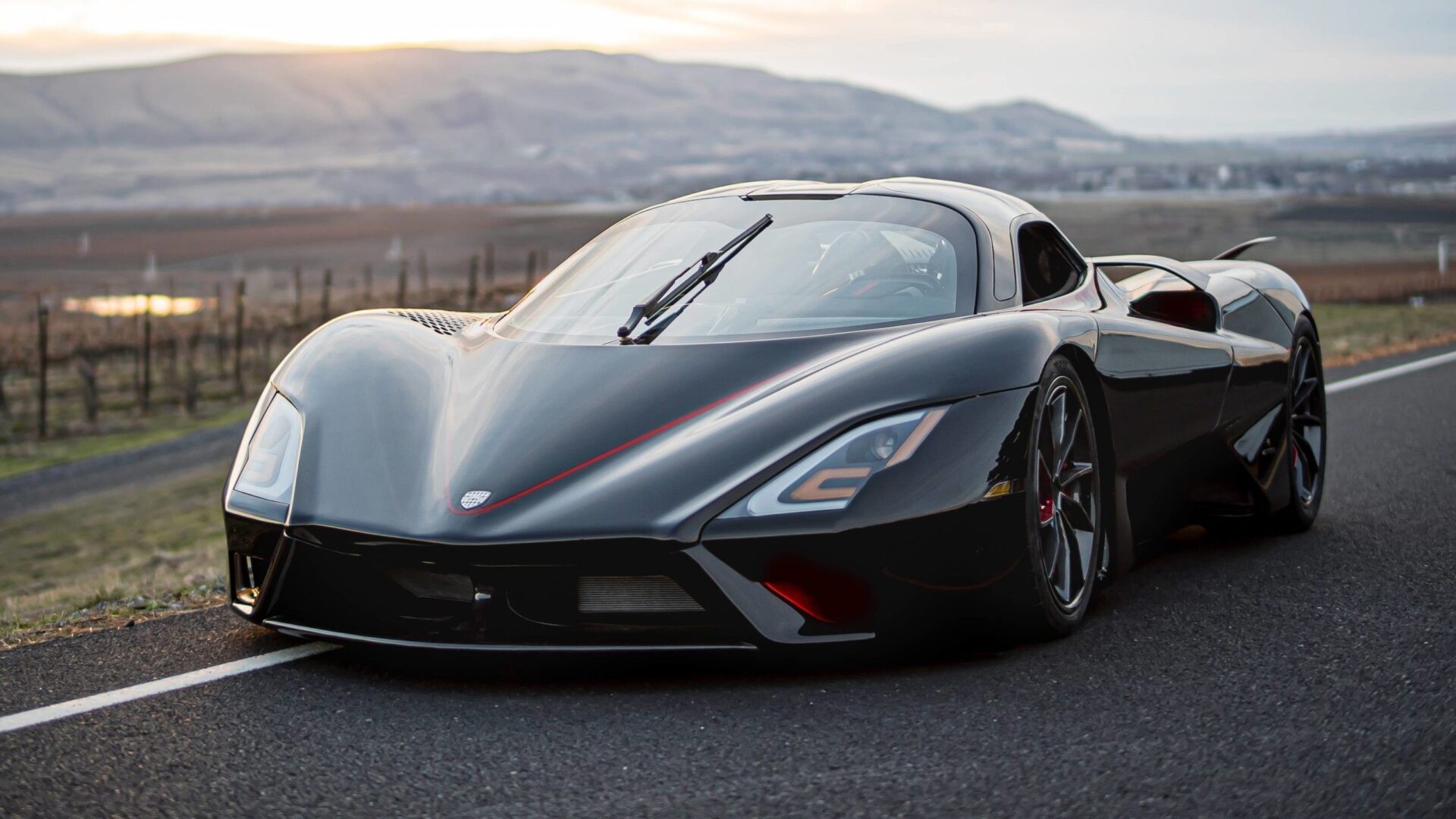

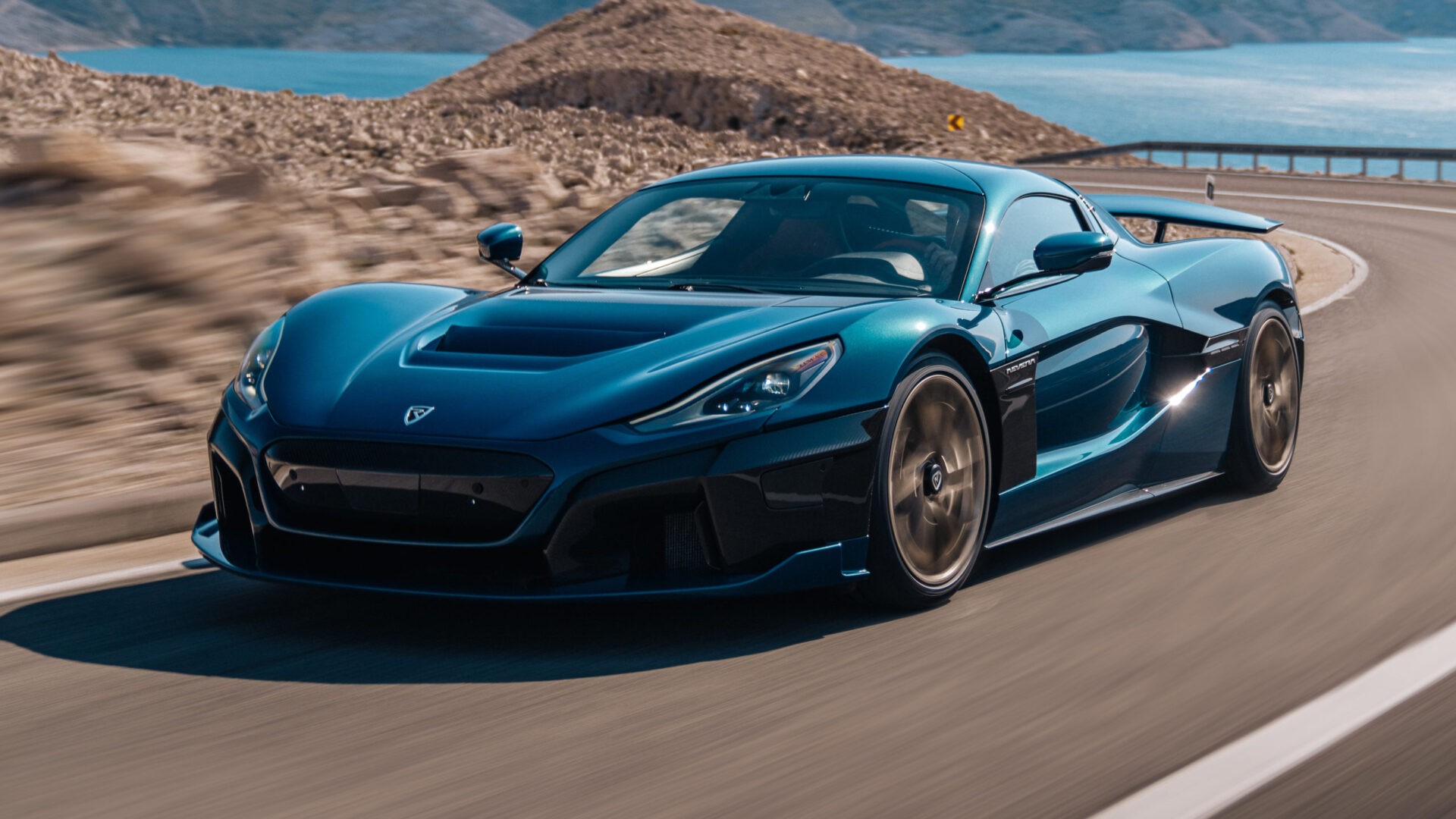
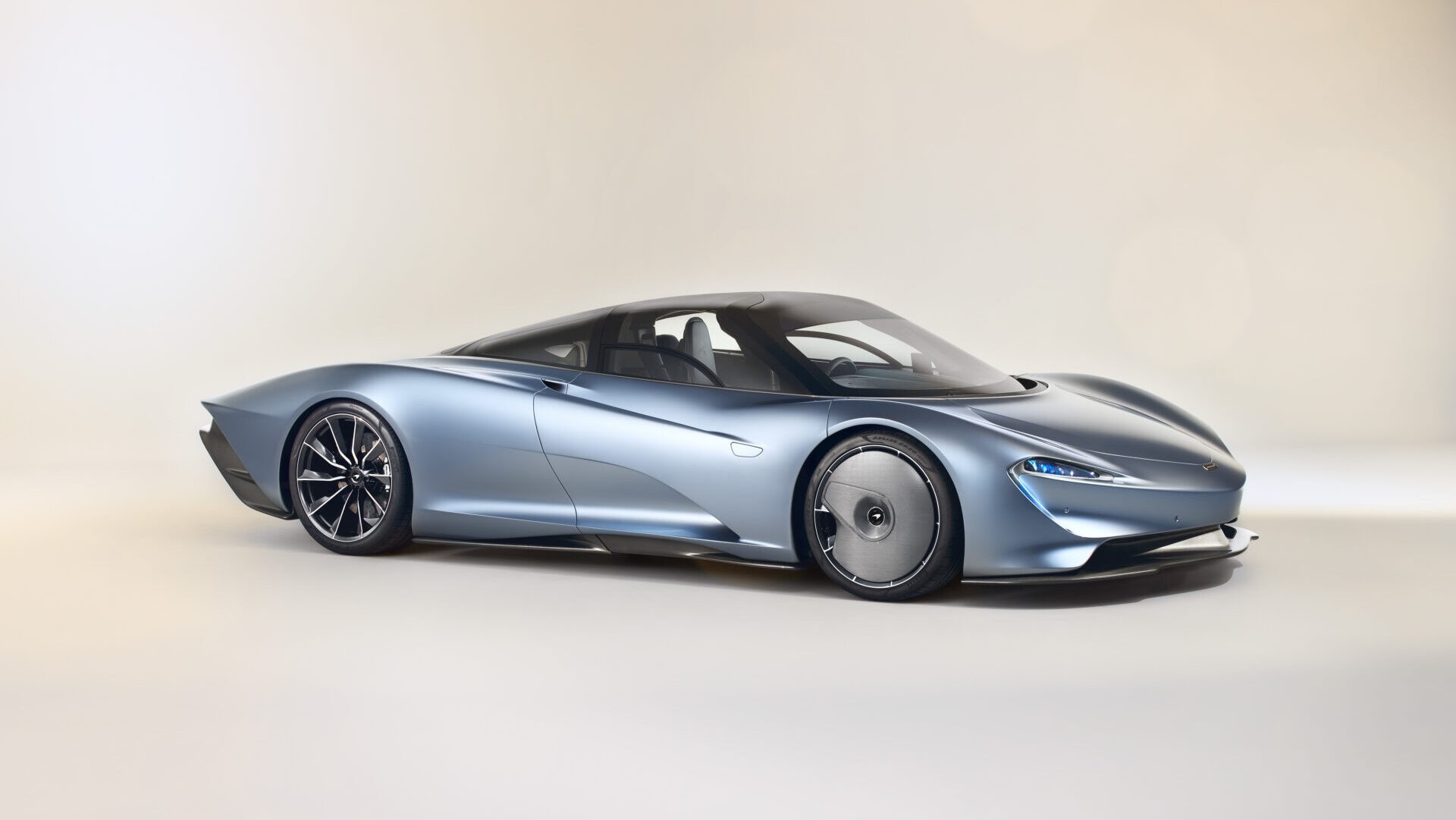
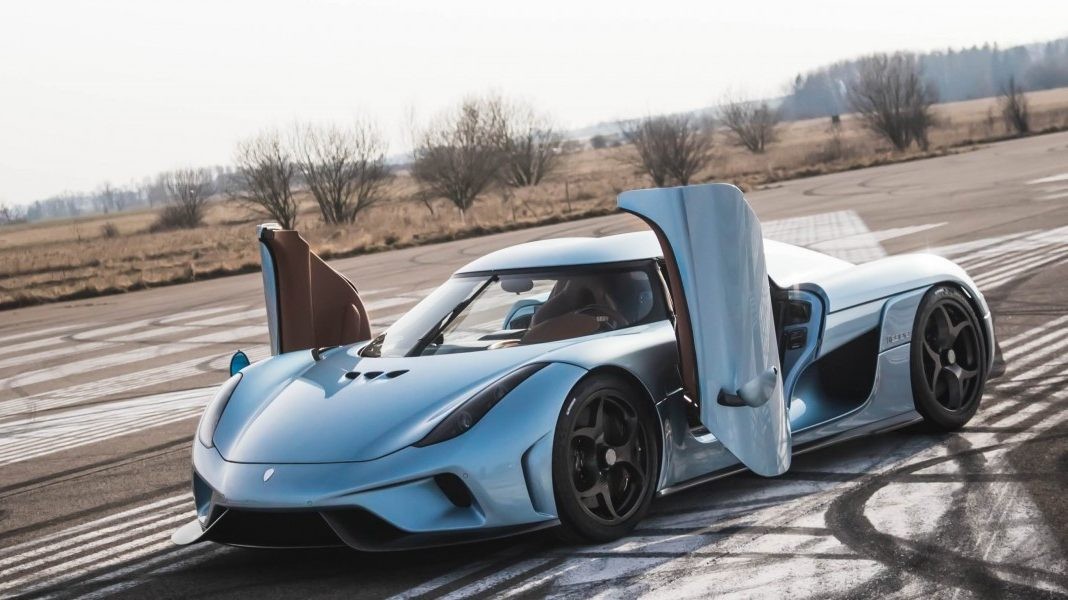


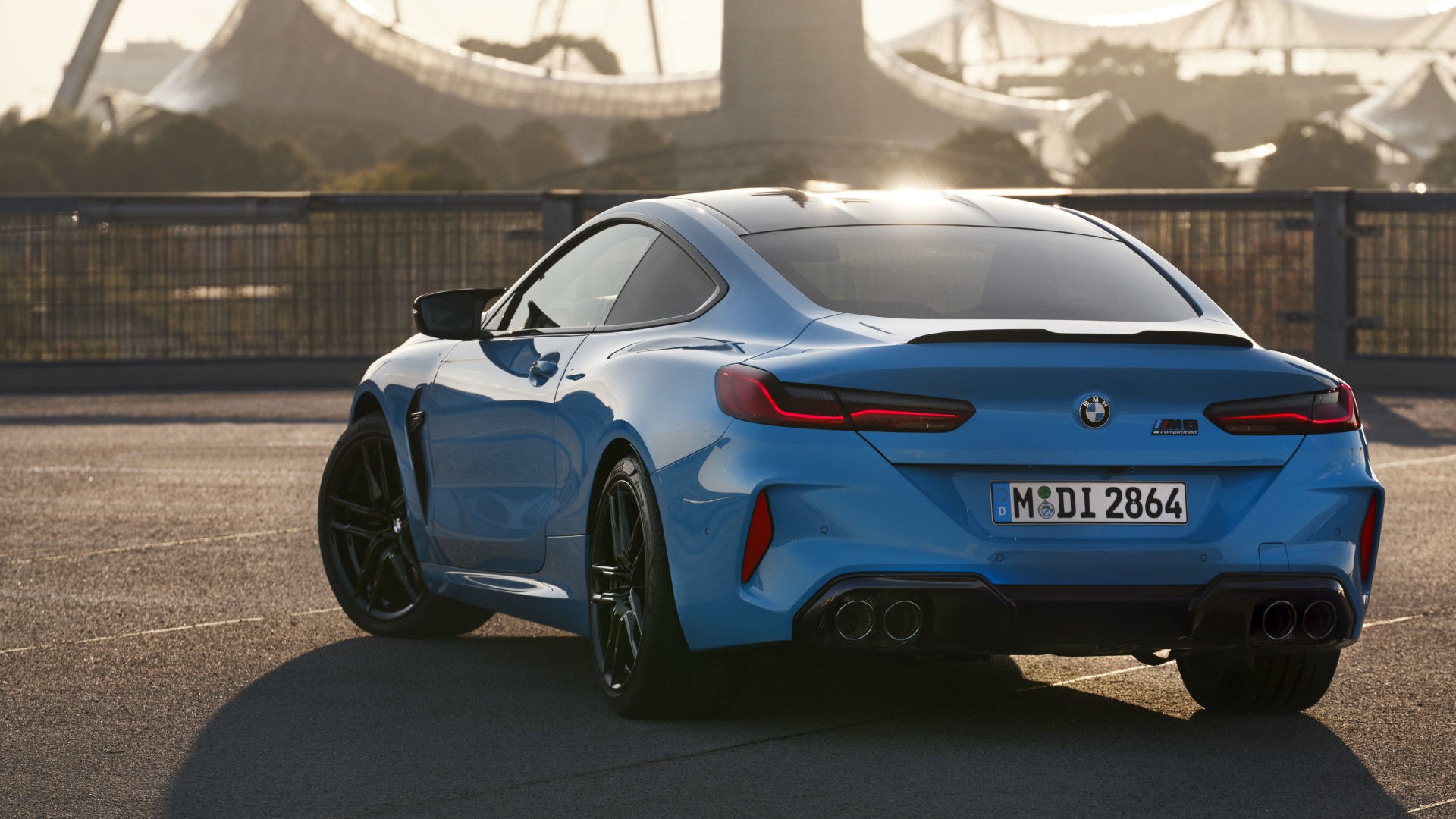

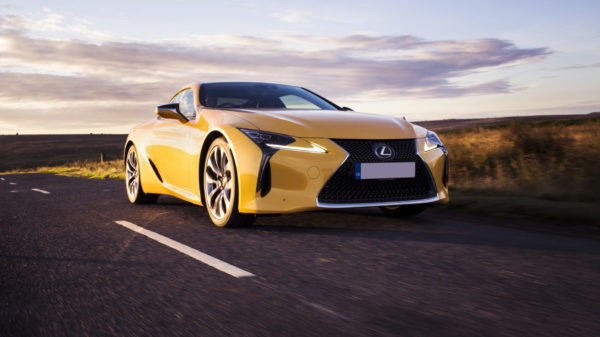
These records reflect not just engineering achievements, but also the evolving materials, designs, and technologies that make such speeds possible. CARS.EDU.VN provides in-depth articles exploring these milestones and the innovations behind them.
2. Top Contenders: The Fastest Cars on the Planet
Several cars have claimed the title of what fast car in the world, each boasting exceptional performance and innovative engineering. Here’s a detailed look at some of the top contenders:
2.1. Koenigsegg Jesko Absolut – Over 310 mph (499 km/h)
Koenigsegg has consistently pushed the boundaries of automotive performance, and the Jesko Absolut is its most ambitious project to date. Equipped with a 1,600 hp twin-turbocharged V8 engine, the Jesko Absolut is designed for minimal drag and maximum speed.
The Swedish manufacturer estimates that the Absolut can exceed 310 mph, although this figure is based on simulations and dyno testing. Real-world testing will determine if it can live up to its projected performance. Visit CARS.EDU.VN for ongoing coverage of the Jesko Absolut’s speed trials and performance analysis.
2.2. SSC Tuatara – 295 mph (475 km/h)
The SSC Tuatara features a twin-turbocharged V8 engine producing up to 1,750 hp on ethanol. While its initial top speed claim faced controversy, subsequent tests validated its impressive performance.
The Tuatara’s design focuses on aerodynamic efficiency, allowing it to achieve remarkable speeds. Explore articles on CARS.EDU.VN for detailed comparisons between the Tuatara and other top-speed contenders.
2.3. Bugatti Tourbillon – 277 mph (446 km/h)
Continuing Bugatti’s legacy of high-performance vehicles, the Tourbillon features a 1,800 hp V16 hybrid engine. This luxurious hypercar accelerates from 0-60 mph in under 2.0 seconds.
Bugatti aims to push the Tourbillon’s limits even further, drawing on its experience with the Chiron to potentially exceed 300 mph. Stay updated on the Tourbillon’s development and performance metrics at CARS.EDU.VN.
2.4. Hennessey Venom F5 – 272 mph (438 km/h)
The Hennessey Venom F5 is an American-made supercar powered by a 6.6-liter twin-turbocharged V8 engine producing 1,817 hp. It accelerates from 0-60 mph in 2.6 seconds and has a top speed of 272 mph.
Hennessey plans to further enhance the Venom F5’s performance, targeting a top speed of over 300 mph. Follow CARS.EDU.VN for exclusive insights into Hennessey’s high-speed development programs.
2.5. Rimac Nevera – 256 mph (412 km/h)
The Rimac Nevera showcases the potential of electric hypercars, featuring four electric motors producing a combined 1,914 hp. It accelerates from 0-60 mph in just 1.9 seconds and reaches a top speed of 256 mph.
The Nevera’s advanced battery technology and carbon fiber construction contribute to its exceptional performance. Discover more about electric vehicle technology and performance on CARS.EDU.VN.
2.6. McLaren Speedtail – 250 mph (402 km/h)
The McLaren Speedtail is designed for aerodynamic efficiency, achieving a top speed of 250 mph. Its sleek bodywork and three-seat configuration make it a unique and high-performance vehicle.
Although not specifically designed for top-speed records, the Speedtail represents McLaren’s commitment to pushing the limits of automotive engineering.
2.7. Koenigsegg Regera – 250 mph (402 km/h)
The Koenigsegg Regera combines a twin-turbo V8 engine with an electric motor, producing a total of 1,500 hp. It uses a unique single-gear direct-drive system to reach its top speed of 250 mph.
The Regera’s innovative drivetrain and hybrid technology set it apart from other high-performance cars.
2.8. Aston Martin Valkyrie – 250 mph (402 km/h)
The Aston Martin Valkyrie is inspired by Formula 1 cars, featuring a 6.5-liter hybrid V12 engine producing 1,160 hp. Its lightweight construction and aerodynamic design enable it to reach a top speed of 250 mph.
The Valkyrie offers a unique driving experience, blending high performance with advanced engineering.
2.9. Pagani Huayra – 238 mph (383 km/h)
The Pagani Huayra is renowned for its exquisite design and performance. Equipped with an AMG-derived twin-turbocharged V12 engine producing 730 hp, it reaches a top speed of 238 mph.
The Huayra’s carbon fiber construction and active aerodynamics contribute to its exceptional handling and speed.
2.10. Chevrolet Corvette ZR1 – 233 mph (375 km/h)
The Chevrolet Corvette ZR1 is an American icon, featuring a 5.5-liter V8 engine with two turbochargers producing 1,064 hp. It reaches a top speed of 233 mph, making it the most powerful V8 engine ever produced in the USA by a car maker.
The ZR1 offers impressive performance and represents American automotive engineering.
3. The Fastest Cars Available on Carwow: Performance Within Reach
While hypercars dominate the top-speed charts, several readily available models offer exhilarating performance for driving enthusiasts. Here are some of the fastest cars you can find on Carwow:
3.1. Mercedes-AMG GT – 196 mph (315 km/h)
The Mercedes-AMG GT combines performance with luxury, featuring a 4.0-liter twin-turbocharged V8 engine producing 585 hp. It reaches a top speed of 196 mph and offers a thrilling driving experience.
3.2. Alfa Romeo Giulia Quadrifoglio – 191 mph (307 km/h)
The Alfa Romeo Giulia Quadrifoglio is a high-performance saloon car powered by a twin-turbo V6 engine producing 510 hp. It reaches a top speed of 191 mph and delivers an engaging driving experience.
3.3. BMW M8 Competition – 190 mph (306 km/h)
The BMW M8 Competition is a grand tourer that combines performance with luxury. Equipped with a powerful engine, it reaches a top speed of 190 mph with the M Driver’s Pack.
3.4. Audi RS7 Performance – 174 mph (280 km/h)
The Audi RS7 Performance is a GT car with a 4.0-liter V8 engine. It reaches a top speed of 174 mph, offering a blend of performance and practicality.
3.5. Lexus LC500 – 168 mph (270 km/h)
The Lexus LC500 is a stylish coupe with a V8 engine, offering a top speed of 168 mph. It combines luxury with performance, making it a unique alternative to German GT cars.
4. Technology and Innovation Driving Speed
Several technological advancements have contributed to the increasing speeds of modern cars. These innovations span across various areas, including engine design, aerodynamics, materials science, and electronic control systems.
4.1. Advanced Engine Technologies
Modern engines utilize various technologies to maximize power output and efficiency. These include:
- Turbocharging and Supercharging: Forced induction systems increase air intake, boosting engine power significantly.
- Direct Injection: Direct fuel injection improves combustion efficiency and reduces emissions.
- Variable Valve Timing: Variable valve timing optimizes engine performance across the RPM range.
- Hybrid Technology: Hybrid systems combine electric motors with internal combustion engines, providing additional power and efficiency.
4.2. Aerodynamic Innovations
Aerodynamics play a crucial role in achieving high speeds. Modern cars utilize various aerodynamic features to minimize drag and maximize downforce. These include:
- Streamlined Body Designs: Smooth, aerodynamic body shapes reduce air resistance.
- Active Aerodynamics: Adjustable wings and spoilers optimize downforce and drag based on speed and driving conditions.
- Underbody Aerodynamics: Diffusers and flat underbodies manage airflow beneath the car, reducing lift and improving stability.
4.3. Lightweight Materials
Reducing weight improves a car’s acceleration, handling, and braking performance. Modern cars utilize lightweight materials such as:
- Carbon Fiber: Carbon fiber composites offer high strength and low weight, making them ideal for body panels and chassis components.
- Aluminum: Aluminum alloys are used extensively in engine blocks, suspension components, and body panels.
- Magnesium: Magnesium alloys are used in various components to reduce weight further.
4.4. Electronic Control Systems
Electronic control systems optimize various aspects of a car’s performance, including:
- Engine Management Systems: Electronic control units (ECUs) manage fuel injection, ignition timing, and other engine parameters for optimal performance.
- Traction Control Systems: Traction control systems prevent wheelspin, maximizing acceleration and stability.
- Stability Control Systems: Stability control systems prevent skidding and maintain vehicle control in challenging driving conditions.
- Adaptive Suspension Systems: Adaptive suspension systems adjust damping rates based on road conditions and driving style, improving ride quality and handling.
5. The Driving Experience: What It Feels Like to Drive a Fast Car
Driving a fast car is an exhilarating experience that combines adrenaline-pumping acceleration with precise handling and control. The sensations of speed, power, and responsiveness create a unique and unforgettable experience.
5.1. Acceleration and G-Force
The rapid acceleration of a fast car generates significant G-forces, pushing the driver back into their seat. This sensation is particularly intense in hypercars and electric vehicles with instant torque delivery.
5.2. Handling and Cornering
Fast cars are designed to handle high speeds and challenging road conditions. Advanced suspension systems, precise steering, and high-performance tires provide exceptional handling and cornering capabilities.
5.3. Braking Performance
Effective braking is crucial for safety at high speeds. Fast cars utilize high-performance braking systems with large rotors, powerful calipers, and advanced ABS technology to provide rapid and controlled deceleration.
5.4. Sensory Overload
Driving a fast car engages all the senses, from the roar of the engine to the feel of the road through the steering wheel. The combination of sights, sounds, and sensations creates an immersive and thrilling driving experience.
6. Safety Considerations: Managing High Speeds Responsibly
While driving a fast car is exhilarating, it’s essential to prioritize safety and manage high speeds responsibly. Adhering to traffic laws, practicing safe driving techniques, and maintaining the vehicle in optimal condition are crucial for preventing accidents.
6.1. Importance of Driver Training
High-performance driving requires specialized skills and knowledge. Driver training programs offered by reputable driving schools can teach drivers how to handle fast cars safely and effectively.
6.2. Vehicle Maintenance
Regular vehicle maintenance is essential for ensuring optimal performance and safety. Checking tire pressure, brake condition, fluid levels, and other critical components can prevent mechanical failures and accidents.
6.3. Adhering to Traffic Laws
Obeying speed limits and traffic laws is crucial for preventing accidents and ensuring the safety of all road users. Speed limits are designed to reflect the safe operating speed for a given road and conditions.
6.4. Use of Safety Equipment
Using safety equipment such as seatbelts, helmets, and protective gear can significantly reduce the risk of injury in the event of an accident. Seatbelts are designed to restrain occupants during a collision, while helmets and protective gear can protect against head and body injuries.
7. The Future of Speed: Emerging Technologies and Trends
The pursuit of speed continues to drive innovation in the automotive industry. Emerging technologies and trends promise to push the boundaries of performance even further, creating faster, more efficient, and safer cars.
7.1. Electric Vehicle Performance
Electric vehicles are rapidly gaining popularity as high-performance alternatives to traditional gasoline-powered cars. Advancements in battery technology, motor design, and energy management are enabling electric vehicles to achieve impressive acceleration and top speeds.
7.2. Autonomous Driving Technologies
Autonomous driving technologies have the potential to revolutionize the way we drive. Self-driving cars can optimize performance, improve safety, and reduce traffic congestion.
7.3. Sustainable Materials
The automotive industry is increasingly focused on using sustainable materials in vehicle construction. Lightweight, eco-friendly materials such as bamboo, hemp, and recycled plastics can reduce a car’s environmental impact without compromising performance.
7.4. Advanced Aerodynamics
Aerodynamic innovations continue to play a crucial role in improving vehicle performance. Active aerodynamic systems, such as adjustable wings, spoilers, and air curtains, can optimize downforce and drag based on driving conditions.
8. Fastest Cars FAQs
8.1. What is the fastest production car in the world?
On paper, the Koenigsegg Jesko Absolut holds the title with a theoretical top speed exceeding 310 mph. However, until it achieves this speed in real-world testing, the Bugatti Chiron Super Sport 300+ remains the fastest with a recorded top speed of 304 mph.
8.2. What is the fastest car from 0-60 mph?
The Rimac Nevera is the quickest accelerating car, reaching 0-60 mph in just 1.9 seconds.
8.3. What is the fastest anyone has gone in a car?
The highest speed ever achieved in a car is 763 mph, set by Andy Green in the ThrustSSC jet-powered car.
8.4. How important is aerodynamics in achieving top speed?
Aerodynamics are crucial for reducing drag and increasing stability at high speeds. Streamlined designs and active aero features help cars cut through the air efficiently.
8.5. What role does engine power play in achieving high speeds?
Engine power, measured in horsepower and torque, directly impacts a car’s ability to accelerate and maintain high speeds. More power enables the car to overcome air resistance and achieve higher velocities.
8.6. How do lightweight materials contribute to a car’s speed?
Lightweight materials reduce a car’s overall weight, improving acceleration, handling, and braking performance. Lighter cars require less power to reach high speeds.
8.7. What safety features are essential for fast cars?
Essential safety features for fast cars include high-performance braking systems, advanced stability control systems, traction control, and robust chassis designs.
8.8. Are electric cars capable of achieving high speeds?
Yes, electric cars can achieve high speeds due to their instant torque delivery and advanced battery technology. The Rimac Nevera is a prime example of an electric hypercar with exceptional performance.
8.9. What is the role of tire technology in high-speed driving?
Tire technology is critical for providing grip, stability, and control at high speeds. High-performance tires are designed to withstand extreme forces and temperatures.
8.10. How can drivers prepare themselves for driving fast cars safely?
Drivers can prepare themselves by participating in high-performance driving courses, practicing safe driving techniques, and maintaining their vehicles in optimal condition.
9. Conclusion: The Thrill and Innovation of Speed
The quest for what fast car in the world represents the pinnacle of automotive engineering and innovation. From the groundbreaking achievements of the Koenigsegg Jesko Absolut to the electric prowess of the Rimac Nevera, these vehicles showcase the remarkable capabilities of modern technology. Whether you’re a dedicated enthusiast or simply intrigued by the boundaries of speed, exploring these cars offers a glimpse into the exciting future of automotive performance.
Eager to delve deeper into the world of high-performance vehicles? Visit CARS.EDU.VN today for in-depth reviews, comparisons, and the latest news on the fastest cars in the world.
Are you facing challenges with your current vehicle or seeking expert advice on maintaining its performance? At CARS.EDU.VN, we understand the difficulties of finding reliable car care and repair services. That’s why we offer comprehensive guides and resources to help you make informed decisions and keep your car running smoothly.
Ready to experience the difference? Contact us today:
- Address: 456 Auto Drive, Anytown, CA 90210, United States
- WhatsApp: +1 555-123-4567
- Website: CARS.EDU.VN
Let cars.edu.vn be your trusted partner in navigating the world of automotive excellence.
